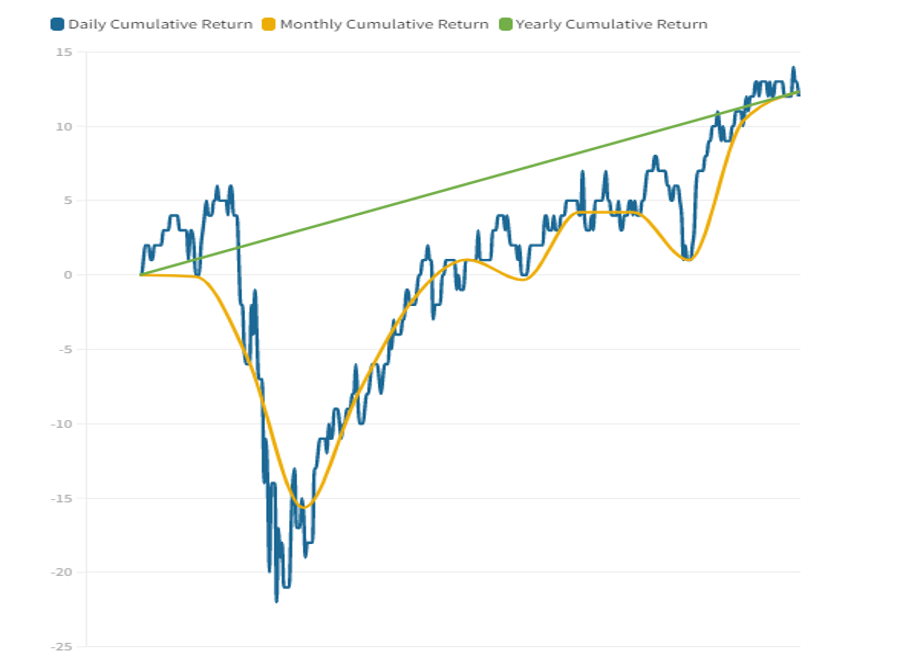… Slow And Steady Wins The Race.
“The most important quality for an investor is temperament, not intellect.” Warren Buffett.
During much of my career I was based in London, working in or around the City and mostly giving or attending investment presentations. They follow a familiar pattern: how risk is managed, how they measure volatility and how their research helps pick the best shares. The fun part is deciphering the language used to explain how performance is measured. Let us just say there is a fair amount of linguistic gymnastics going on to avoid a simple explanation. It is akin to the super speed terms and conditions you hear on radio adverts. The challenge was trying to work out exactly how this could be translated into terms clients could understand.
The most honest comment was from one fund manager who happily said he would compare his performance to any other fund or index, but only if he could choose the timeframe over which the performance was measured. In other words, it depends on how volatility is measured…over a decade, a year, a month, or a day.
How fund’s volatility is measured makes a dramatic difference. The chart below comes from a recent article on how diverse ways of measuring volatility can lead to massively different outcomes. This illustration shows three variations on the volatility scale.
If investors were given the choice of any of the investment journeys shown, they would all choose the green line. In fact, they all track the same thing: the global equity market for 2020. The only difference is the way price movements are measured. The green line is an annual measure, the orange line is monthly pricing points, and the “turbulence trauma” inducing blue line maps the daily price movement.
Three variations on the volatility scale
Measuring the volatility of a fund, asset or a market needs a sensible, consistent unit of measurement. Knowing which yardstick was used matters. You could even say this is the main reason we suggest that checking fund values every day is a bad idea.
The media focus on short-term market movements can easily unsettle investors. The sudden downward movement of share prices can influence investors to sell. However, it often proves to be the worst decision they could make. The markets in 2020 were unnerving for investors, but those who feared the initial market turmoil would lead to massive losses sold their holdings and moved out of the market. As it turned out, the markets recovered very strongly, with most stock markets ending higher over the year.
Peter Bernstein, a scholarly financial author spoke for many when he said, “No matter how calm you are, no matter how long term an investor you are, no matter what your horizons, when the market is jumping around, you feel uncertainty in your gut and it’s hard to resist that.”
Prices are unpredictable. Risk is a constant companion for investors, but the risk journey is not always full of thrills and spills. Lack of volatility or a narrow range of small price movements over time is not a universally positive situation either. For many years government bonds or gilts had extremely low levels of volatility. Yet this year we have seen historically extreme levels of price movements in what had become thought of as a boring, low risk asset class. As Peter Lynch, legendary fund manager said,” Long-term bonds can be almost as volatile as stocks. They have their own corrections.” The short-term bond market did not escape the market downturn, but as expected, navigated the storm a little more elegantly.
Looking beyond the immediate market horizon is essential. Being reminded of the strength of long-term market returns builds a compelling case for resisting the pressure to look at daily portfolio values.
According to Credit Suisse’s Global Returns Yearbook, UK (United Kingdom), shares have averaged a 9.4% p.a. return since 1900. Suggesting every £1 invested then would now be worth £22,432, before inflation. The “real return” after allowing for inflation, shows each £1 invested would be worth £291, a significant increase in value.
The range of UK market movements over that period highlights the variations in market returns. From a very painful -50.4% in 1974, to +145.1% in 1975. Research shows that many investors feel pressurised to sell as prices fall. How many investors would have sold everything at the end of 1974? Understandable, but just imagine if you had missed the recovery the following year.
What history shows us is that by setting our sights on the long-term financial horizon, and ignoring the emotional turbulence created by short-term market swings, rewards the patient, disciplined investor. As Warren Buffett, investor extraordinaire once said, “The stock market is a device to transfer money from the impatient to the patient.”
2022 will not be remembered fondly by investors. It was a year where most share and fixed income markets fell, in many cases significantly. This positive correlation, where asset classes who normally respond differently, suddenly coalesce is unusual, but not unprecedented. Thankfully, things are normalising, albeit slowly.
We hope you enjoyed your Christmas break, and that 2023 is a year which ignites purpose, passion and unlocks ambition and possibilities for us all.

